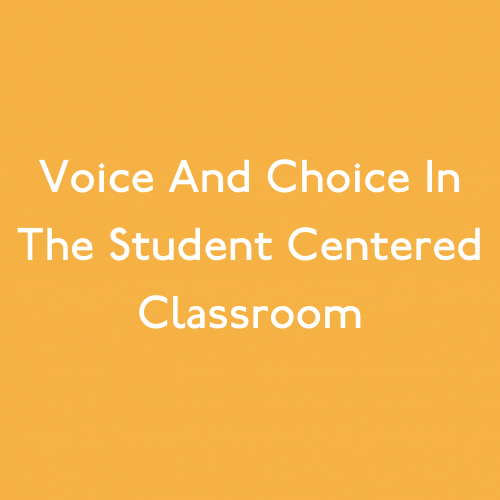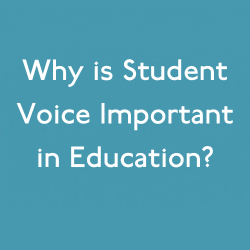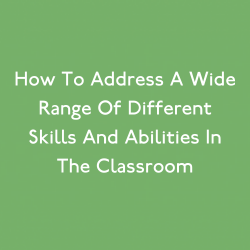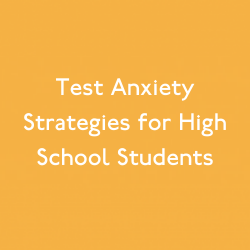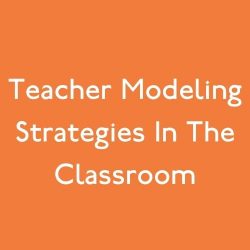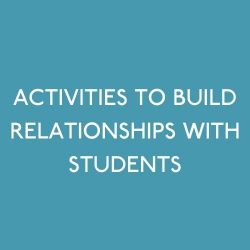One reason why schools and districts prioritize social emotional learning is to give students the tools they need to understand who they are, regulate their emotions, build healthy relationships, achieve their goals, and navigate their lives in healthy and productive ways. Yet still, many students experience the school day that doesn’t require much navigating but is more of a routine of following directions. What they learn, where they sit, how they learn, when they go to the bathroom, when they eat – most of a student’s day is planned, prepared, and coordinated for them. If the goal is to give students the tools to navigate their lives, why aren’t we also giving them more opportunities to practice during the school day?
A classroom that understands the importance of student voice in education is one where students’ values, perspectives, passions, and interests are reflected in the classroom environment and the learning activities. Students have a say when it comes to things like classroom norms or their approach to learning. This also means that students know who they are and are supported to reflect, explore, and develop their interests, preferences, and beliefs. SEL helps students understand their voice and how to use it in a student-centered classroom.
Of course, students also need guidance and direction. While student choice is sometimes thought of through the lens of giving students more freedom, choice actually creates a set of parameters that limits our decision making in positive, constructive ways. This is a helpful way to practice making decisions and reflecting on our choices while inviting guidance for teachers. A student-centered classroom that prioritizes both student voice and choice includes opportunities for students to explore their interests and define who they are, while also practicing applying some of those learnings by being supported through decision making with choices.
Ways to give your students more voice and choice
Designing a student-centered classroom environment that promotes student voice and choice is as much of a mindset shift for educators as it is an opportunity to bring new strategies and teaching practices into the classroom. There are endless web searches for techniques that promote student voice or foster more opportunity for student choice, but creating a student-centered classroom also requires educators to continuously reflect on their classroom practices.
One great starting point is to start asking yourself why. Why are desks arranged in a particular way? Why do you review the homework together as a class? Why do all students sit on the rug for story time? Getting curious about why your classroom operates the way it does will help you identify aspects that may be adjusted to center students. For example, do you notice that your why includes several reflections about the expectations of your administration or decisions that adults made about how the classroom should function? Or, do you notice that there aren’t answers to all of the why’s you start asking? Over time, you should start to notice that students take center stage in your reflections. Everything from how students hand in assignments to how you model a new math concept can be facilitated with practices that center students.
It’s critical to start getting to know your students from the first day of school. You may have heard about them from other teachers, or reviewed a transcript or school record, but prioritize getting to know students from students themselves. Students need to be in an environment where they feel free to be themselves, share pieces of their lives, and explore and express new interests. Incorporating interactive social and emotional development practices can give students daily opportunities to connect and get to know one another. As the school year continues, incorporate what you learn about students – and what students learn about each other – into learning activities. This could mean adding new titles to your classroom library, selecting learning examples that reflect student interest, or even pairing students based on similar or diverse interests.
Student choice is often misunderstood as “taking off the reigns” so to speak, giving students freedom to decide what and how they learn. While this may be true in concept, the practice looks quite different! Think about when you go to a grocery store and find yourself facing an extended aisle of seemingly unlimited bread options. You find yourself spending 10 minutes longer than usual exploring the options before you make a decision. (And you’ve probably been buying bread for years, know what you like and have an idea of what you’re looking for!)
This can be how students feel when we simply allow them to choose from an unlimited menu of options – or worse, open-ended decisions with no options – and students don’t have years of practice making learning choices. Giving students options to support their decision making isn’t about guiding students to a particular outcome, but instead it supports students through the decision making process. What’s critical is to allow students to reflect on their choices to strengthen their decision making skills. Ask questions like, “How do you feel about the choice you made? How did your choice impact you? If you had to make the choice again, would you choose the same option or try something new? Why?”
What are the characteristics of a student-centered classroom?
Being able to regulate your emotions doesn’t just reduce behavioral incidents in schools, it is a skill that can liberating. When we learn how to recognize and regulate our emotions in healthy ways, we are able to gain a sense of self control and self trust. Being able to build healthy relationships doesn’t just create stronger classroom communities, it is how we create our lives.
When we have the skills to build and maintain healthy, enriching relationships, we have a stronger support system to be there with us throughout the highs and lows of life. A student centered classroom provides students with opportunities to practice skills in authentic contexts, not just to follow a particular curriculum but to deepen student learning and independence. SEL can help students develop their voice and navigate making choices in a student-centered classroom.
The Nation’s Leading SEL Company
Move This World is the leading provider of social emotional learning (SEL) multimedia experiences for students, teachers, and families. Our SEL programs are customized for PreK-12 students and are delivered through short interactive lessons with the goal of empowering students to navigate the rapidly-changing realities of their world – both in the classroom and throughout their lives. The impactful yet simple Move This World SEL curriculum allows educators and families to incorporate Social Emotional Learning into their schedules every day, without planning or prep.
Contact us to learn more about SEL Grants and bringing Social Emotional Learning to your classroom.
Related links:
